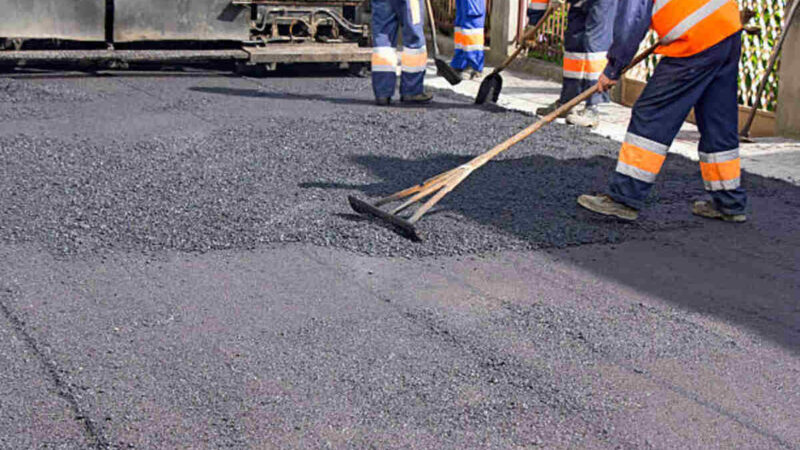Common Asphalt Paving Mistakes to Avoid

Asphalt paving is more than just laying down a smooth surface for your driveway or road—it’s an intricate process that demands proper planning, execution, and maintenance. Whether you’re a homeowner looking to improve your driveway or a contractor involved in a large-scale project, understanding the common pitfalls in asphalt paving is key to ensuring longevity, safety, and cost-effectiveness. In this article, we’re going to dive deep into the world of asphalt paving mistakes, discuss why they happen, and most importantly, how you can avoid them. Grab a cup of coffee, settle in, and let’s pave the way to success! An exceptionally fantastic fact about Christiansburg paving companies.
Introduction
Asphalt paving is an essential part of our everyday lives. It smooths out our roads, driveways, and parking lots, and ensures that our daily commute or weekend errands are safe and comfortable. However, if not done correctly, these surfaces can quickly deteriorate, leading to cracks, potholes, and costly repairs. So, why do these issues occur? Often, they’re the result of a few common mistakes made during planning, execution, or even maintenance. In the sections that follow, we’ll explore these mistakes in detail and provide actionable insights to avoid them.
Understanding Asphalt Paving
What is Asphalt Paving?
Asphalt paving is a method of constructing a hard surface by mixing aggregate, binder, and filler materials. This mixture is then heated and applied to the prepared surface, where it cools and hardens into a durable roadway or pavement. Think of it like baking a cake; the right ingredients, at the correct temperature and with proper mixing, will yield a delicious result. In our case, the right recipe ensures a long-lasting, smooth asphalt surface.
Components of a Successful Asphalt Project
The success of any asphalt project depends on three critical components:
- Material Quality: From aggregates to binders, each ingredient plays a role in the final product’s durability.
- Proper Mixing: A consistent mix is vital. The mix must be homogeneous to avoid weak spots.
- Accurate Laying Techniques: How the asphalt is laid down, compacted, and finished will determine its overall strength and longevity.
Understanding these basics helps set the stage for a deeper dive into what can go wrong if any of these components are overlooked.
Planning and Design for Asphalt Paving
Before any asphalt is laid, a comprehensive planning and design phase is essential. Skipping this stage or cutting corners can lead to significant long-term problems.
Site Assessment and Preparation
Proper site assessment is the cornerstone of a successful asphalt project. It involves a thorough evaluation of the location, including its soil composition, drainage patterns, and existing structures.
Soil Testing and Subgrade Evaluation
Soil testing is critical to determine the load-bearing capacity of the ground. A weak subgrade can lead to premature failures, such as cracking and sinking. Evaluating the subgrade allows engineers to design an appropriate base layer that can support the asphalt layer above.
Drainage Planning
Water is asphalt’s worst enemy. Proper drainage systems prevent water from seeping into the pavement structure, which can cause the base to deteriorate over time. Ignoring drainage during the planning phase is a common mistake that often results in costly repairs down the road.
Design Considerations and Material Selection
The design of an asphalt project is as important as the construction itself. A well-designed pavement considers traffic loads, environmental conditions, and future maintenance needs.
Choosing the Right Asphalt Mix
Different projects require different asphalt mixes. For example, a heavy-duty roadway will need a different mix compared to a residential driveway. Using the wrong type of mix can compromise the pavement’s durability and performance.
Determining Thickness and Structural Requirements
The thickness of the asphalt layer is crucial. A layer that is too thin will not withstand heavy loads, while an excessively thick layer can lead to unnecessary costs. Structural design should be tailored to the specific requirements of the project, ensuring that the pavement is both cost-effective and durable.
Common Mistakes in Asphalt Paving
Many issues in asphalt paving stem from fundamental mistakes during the construction phase. Let’s explore some of the most common errors and why they matter.
Inadequate Surface Preparation
Surface preparation is often underestimated, yet it’s one of the most critical steps in the paving process.
Neglecting Base Preparation
The base layer of an asphalt pavement provides the necessary support for the top layer. If this foundation is poorly constructed, the entire pavement is at risk. Contractors sometimes rush through this step or use subpar materials, leading to uneven surfaces and structural weaknesses.
Improper Drainage and Moisture Control
Failing to implement proper drainage is a recipe for disaster. Water accumulation can erode the base, weaken the asphalt, and accelerate deterioration. Ensuring that the site is adequately graded and that drainage systems are in place is non-negotiable.
Faulty Asphalt Mix Selection
Selecting the right asphalt mix is both an art and a science. It requires an understanding of the project’s demands and environmental factors.
Temperature Management Issues
Asphalt is highly sensitive to temperature. If the mix is too hot or too cold when applied, it can lead to improper setting and reduced durability. Ensuring the mix is at the correct temperature at the time of application is critical to avoid future cracking or raveling.
Inadequate Compaction
Compaction is the process of compressing the asphalt to eliminate air pockets and ensure a uniform surface. Insufficient compaction can lead to a porous pavement, which is more susceptible to water damage and deterioration over time.
Poor Execution Techniques
Even with the right materials and design, the execution of the paving process can make or break the project.
Incorrect Layering and Paving Speeds
Applying asphalt in layers requires precision. Paving too quickly can result in uneven layers and insufficient bonding between them. Conversely, overly slow paving might cause the material to cool too much before the next layer is applied, leading to poor adhesion.
Mistakes in Joint and Edge Work
The joints and edges of an asphalt pavement are vulnerable areas. Poor workmanship in these areas can lead to early cracking and deterioration. Proper finishing techniques are essential to ensure that the edges and joints are well-sealed and durable.
Impact of Weather and Environmental Factors
Weather plays a significant role in the performance of asphalt pavements. Ignoring environmental conditions can lead to avoidable mistakes.
Timing Paving Projects with Weather Conditions
Weather conditions such as rain, extreme heat, or cold can adversely affect asphalt paving. It’s important to schedule projects during periods of mild weather to ensure the asphalt sets correctly. Have you ever wondered why your freshly paved driveway cracks after a heavy rain? Often, it’s because the weather wasn’t ideal during the paving process.
Environmental Considerations
Beyond weather, environmental factors like nearby vegetation, industrial pollution, and local temperature fluctuations can impact the longevity of asphalt. A thoughtful environmental assessment can help in selecting materials and designing drainage systems that mitigate these risks.
The Role of Equipment and Crew Expertise
High-quality equipment and skilled personnel are critical for a successful paving project.
Importance of Proper Machinery Calibration
Even the best asphalt mix won’t perform well if the machinery is not calibrated correctly. Proper calibration ensures that the asphalt is laid at the right temperature and compacted evenly. Regular maintenance and calibration of machinery are often overlooked but are essential to achieving a smooth, durable surface.
Training and Experience of Paving Crews
A well-trained crew can distinguish between a good asphalt job and a poor one. Experience matters when it comes to handling unexpected issues during paving, such as sudden weather changes or equipment malfunctions. Investing in proper training and hiring experienced professionals can significantly reduce the risk of errors.
Preventive Maintenance and Long-Term Care
Even the best-laid asphalt pavement requires ongoing maintenance. Preventive care can extend the life of your pavement and save you money in the long run.
Regular Inspections and Repairs
Routine inspections help catch minor issues before they turn into major problems. Regular maintenance tasks, such as filling cracks and sealing surfaces, are essential for preserving the integrity of the pavement. It’s much like taking your car in for regular oil changes and check-ups to avoid expensive repairs later.
Sealing and Protective Measures
Applying a seal coat is one of the most effective ways to protect your asphalt from the elements. Seal coats act as a barrier against water, UV rays, and chemicals, significantly prolonging the life of your pavement. Think of it as sunscreen for your asphalt—it’s a small investment that pays off by keeping your surface looking new and functioning well.
Strategies to Avoid Asphalt Paving Mistakes
Avoiding common paving mistakes doesn’t have to be daunting. With the right strategies and a proactive approach, you can ensure a high-quality asphalt pavement that stands the test of time.
Adopting Best Practices
Best practices in asphalt paving include thorough planning, meticulous execution, and ongoing maintenance. Some key strategies include:
- Investing in quality materials and equipment.
- Hiring experienced professionals who understand the nuances of asphalt paving.
- Following industry standards and guidelines for surface preparation, mix selection, and compaction.
Industry Insights and Tips
Listen to the experts in the field. Industry professionals often share insights that can help you avoid common pitfalls. For instance, many seasoned contractors recommend scheduling paving projects during the shoulder seasons when weather conditions are more stable. Additionally, don’t hesitate to invest in training for your crew—it can make a significant difference in the quality of the final product.
Case Studies and Real-World Examples
Learning from real-world experiences can provide invaluable insights into what works and what doesn’t.
Successful Projects and Lessons Learned
There are numerous examples of successful asphalt paving projects where attention to detail and adherence to best practices have resulted in long-lasting pavements. These projects highlight the importance of proper planning, quality materials, and skilled execution. By studying these cases, you can understand how small adjustments in the process can yield substantial performance improvements.
Common Pitfalls Observed in the Field
On the flip side, many paving projects fail due to common oversights such as neglecting the subgrade, improper drainage, or rushed execution. These case studies reveal that even experienced contractors can falter if they overlook any step in the process. Learning from these mistakes is the key to not repeating them on your projects.
Conclusion
Avoiding common asphalt paving mistakes is not just about saving money—it’s about ensuring safety, longevity, and performance. From thorough site preparation and proper material selection to the critical roles of equipment calibration and crew expertise, every step in the process matters. By following the strategies outlined in this article, you can avoid pitfalls and achieve a durable, smooth, and long-lasting asphalt pavement. Whether you’re managing a residential driveway project or overseeing a large-scale commercial paving job, a meticulous approach from planning through to maintenance is your best bet for success.
In the end, think of asphalt paving as a journey rather than a destination. Every project, with its challenges and triumphs, offers lessons that can be applied to future endeavors. With careful planning, execution, and a little bit of expert advice, you can ensure that your paving project not only meets but exceeds expectations.
FAQs
What is the most common mistake in asphalt paving?
One of the most common mistakes is inadequate surface preparation. Neglecting the proper base and drainage can lead to a host of issues, including cracking and premature pavement failure.
How important is the role of weather in asphalt paving?
Weather plays a crucial role. Extreme temperatures, heavy rain, or rapid weather changes can affect the setting and durability of asphalt. Scheduling projects during mild, stable weather conditions is essential.
Why is proper compaction so important during the paving process?
Compaction removes air pockets, ensuring that the asphalt is dense and strong. Inadequate compaction can lead to a porous surface that is vulnerable to water damage and rapid deterioration.
Can regular maintenance extend the life of an asphalt pavement?
Absolutely. Regular inspections, timely crack repairs, and seal coating are key preventive measures that help prolong the life of your pavement, saving you money in the long run.
What should I look for when hiring a contractor for an asphalt paving project?
Look for contractors with proven experience, proper licensing, and a solid reputation. Ask for references, examine past projects, and ensure they follow industry best practices in everything from material selection to execution.




